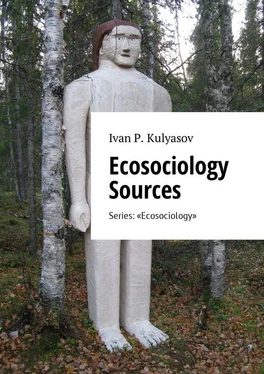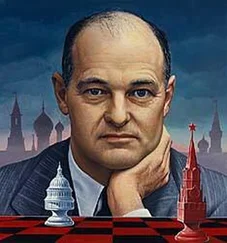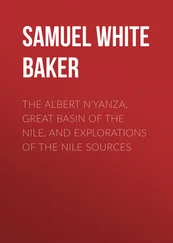I. Kulyasov - Ecosociology Sources. Series - «Ecosociology»
Здесь есть возможность читать онлайн «I. Kulyasov - Ecosociology Sources. Series - «Ecosociology»» — ознакомительный отрывок электронной книги совершенно бесплатно, а после прочтения отрывка купить полную версию. В некоторых случаях можно слушать аудио, скачать через торрент в формате fb2 и присутствует краткое содержание. ISBN: , Жанр: Прочая научная литература, на английском языке. Описание произведения, (предисловие) а так же отзывы посетителей доступны на портале библиотеки ЛибКат.
- Название:Ecosociology Sources. Series: «Ecosociology»
- Автор:
- Жанр:
- Год:неизвестен
- ISBN:9785449009913
- Рейтинг книги:5 / 5. Голосов: 1
-
Избранное:Добавить в избранное
- Отзывы:
-
Ваша оценка:
- 100
- 1
- 2
- 3
- 4
- 5
Ecosociology Sources. Series: «Ecosociology»: краткое содержание, описание и аннотация
Предлагаем к чтению аннотацию, описание, краткое содержание или предисловие (зависит от того, что написал сам автор книги «Ecosociology Sources. Series: «Ecosociology»»). Если вы не нашли необходимую информацию о книге — напишите в комментариях, мы постараемся отыскать её.
Ecosociology Sources. Series: «Ecosociology» — читать онлайн ознакомительный отрывок
Ниже представлен текст книги, разбитый по страницам. Система сохранения места последней прочитанной страницы, позволяет с удобством читать онлайн бесплатно книгу «Ecosociology Sources. Series: «Ecosociology»», без необходимости каждый раз заново искать на чём Вы остановились. Поставьте закладку, и сможете в любой момент перейти на страницу, на которой закончили чтение.
Интервал:
Закладка:
The Russian specifics led to a situation when, in the beginning of the 20 thcentury, the interdisciplinary area between sociology and medicine and statistics became the most promising sociological subject (as related to further development of environmentalism). Theoretical constructions and conclusions were gradually replaced by scientific experiments. The important thing was to obtain, from natural sciences, an exhaustive reply to the questions: Who exactly are humans? How and why do they act (interact with other people and nature)?
Ivan Mihaylovich Sechenov (1829—1905) turned social science about humans into an exact science. Based on extensive experiments and data, he offered a rational explanation for all nervous and mental signs, including consciousness and its manifestation in the form of an act of will. Leaving the holistic approach to the organism as a whole, he divided acts into subconscious and conscious. He substantiated this view suggesting that all mental signs are also physiological (reflexive), and that acts and interactions of cells, organisms (individuals) and populations (society) with their inner and external environment could be studied using objective methods 47 47 Sechenov I.M. Physiology of the sensory organs. St. Petersburg. 1867.; Psychological studies. St. Petersburg. 1873.; Impressions and reality. St. Petersburg. 1890.; Physiology of the nerve centers. St. Petersburg. 1891.; About the subject thinking from a physiological point of view. St. Petersburg. 1894. (all in Russian)
.
He shared and developed the views of Russian cosmists. Together with his wife, he was the first to translate Darwin’s “ The descent of man, and selection in relation to sex ” 48 48 Darwin Ch. R. Descent of man and selection in relation to sex. St. Petersburg: Cherkesov’s Publishing Bookstore. 1873. 2nd edition. Vol. 1—2. 374 p. il. (in Russian, I.M. Sechenov’s and M.A. Sechenova’s translated from English: “ Darwin Ch. R. The descent of man, and selection in relation to sex. 1871. ”).
into Russian, becoming a popularizer of the evolutionary theory, arguing in its favor in terms of physiology and psychology. He is the founding father of the synthetic evolution theory, currently comprising data from paleontology, molecular biology, genetics and systematics.
Ivan Petrovich Pavlov (1849—1936) was the first to formulate the physiological principles of higher nervous activity, based on investigation of dogs 49 49 Pavlov I.P. Twenty years of experience objective study of the higher activity (behaviour) of animals. Moscow: Science. 1923. 661 p. (in Russian)
, making clear the difference between involuntary and conditional reflexes and the role of the reinforcement mechanism in the conditioning of reflexes. It was now clear that, unlike reinforcement, incentives or punishments fail to form conditional reflexes (habits) among humans as they take effect over time rather than during an act itself.
Also of interest is Pavlov’s participation in the debate on native temperaments and their influence on behavior and emotional state. This postulate was largely rejected. Experimenting, Pavlov identified three dynamic parameters – intensity, tranquility and agility of the excitative and inhibitory processes, prevalence and various combinations of which influence intra-specie and external interaction. It was discovered that these parameters were conditioned during interaction with various environments, i.e., they were not native, and they influenced behavior (higher nervous activity) after conditioning 50 50 Pavlov I.P. Physiological theories about the types of nervous system, temperament (p. 77—78).; General types of higher nervous activity in animals and humans (p. 267—93). Moscow-Leningrad. 1951. Complete works. Vol. 3. Book 2. (in Russian)
. However, supporters of the “ancient knowledge” continue to cling to the transcendental argument that Pavlov’s dogs were doomed to make it to the environment, which developed the qualities later identified by Pavlov.
Pavlov’s research was used by practicing psychiatrists and psychotherapists. Sociologists extrapolated the results of Pavlov’s experiments to humans and society. Politicians and businessmen received a better understanding of how they could manage, subordinate, interest prospective buyers and sell their products. Western science on behavior (the behaviorist approach to sociology) and neurolinguistics received a momentum for development and by now have taken the form of studies, using quantitative and qualitative methods, of practices and discourses, including ecological ones.
Vladimir Mihaylovich Bekhterev (1857—1927) extended the objective knowledge about physiology and pathology of human psyche. He also studied certain form of group behavior, for example, mass hysteria when a crowd behaves more stupidly than an individual behaves and ceases to be an assemblage of rational beings 51 51 Bekhterev V.M. Fundamentals of the functions of the brain. St. Petersburg. 1903—1907.; Objective psychology. St. Petersburg. 1907—1910.; Psyche and life. 2nd edition. St. Petersburg. 1904.; Hypnosis and its role in public life. St. Petersburg: Publisher K.L. Rikker. 1908.; Collective reflexology. Petrograd. 1921.; General foundations of the reflexology of man. Moscow-Petrograd. 1923.; The brain and activities. Moscow-Leningrad. 1928. (all in Russian)
. In 1907, with the support of colleagues and donors, he organized the Saint-Petersburg Psycho-neurological Institute, establishing Russia’s first sociological research and educational institution – the chair of sociology.
This chair of sociology was headed by Maksim Maksimovich Kovalevsky (1851—1916) and Evgeny Valentinovich De Roberti (1843—1915), who elaborated a prospective research program based on research in physiology and psychology, individual and collective behavior. This institution had pragmatic tasks in the field of pedagogics, law and health care and, as related to reflexology, was to establish a foundation for scientific management of living beings, including humans, behavior.
In 1908, the institute admitted its first 900 students, with more than a half of them being women. Structurally, the institute consisted of the main faculty, with classes being compulsory for all students for two years, after which they were to choose a major discipline. Aside from sociology, during the first year at the main faculty students were lectured in physics, non-organic chemistry, geology, general biology, anatomy, physiology, general and experimental psychology, logics, history of philosophy, general history, history of Russian literature and theology. At the second year, the curriculum comprised higher mathematics, statistics, physical geography, organic chemistry, general biology, anatomy and histology of the nervous system, physiology, psychophysiology of sensory organs, comparative psychology, history of philosophy, history of economic theories, general history, history of world literature, history of arts and history of culture.
It should be noted that Kovalevsky and De Roberti were high-ranking masons. Accordingly, those familiar with the subject might assume that their efforts were aiming to develop physiology and psychology, establish the corresponding institutions and, on that base, organize regular training of sociologists. These sociologists, who were quite competent, now regularly and reflectively generated a lot of specialized knowledge about interaction of humans, social groups, organizations, structures and institutes, which were easily understandable by corresponding experts. Followers of the historical approach would say that this event was inspired by the course of history. Other people would offer another opinion, for example, saying that this was the result of a public, non-commercial effort of Russian intellectuals. One way or another, it was obvious that this was a key event in the history of Russian sociology.
Читать дальшеИнтервал:
Закладка:
Похожие книги на «Ecosociology Sources. Series: «Ecosociology»»
Представляем Вашему вниманию похожие книги на «Ecosociology Sources. Series: «Ecosociology»» списком для выбора. Мы отобрали схожую по названию и смыслу литературу в надежде предоставить читателям больше вариантов отыскать новые, интересные, ещё непрочитанные произведения.
Обсуждение, отзывы о книге «Ecosociology Sources. Series: «Ecosociology»» и просто собственные мнения читателей. Оставьте ваши комментарии, напишите, что Вы думаете о произведении, его смысле или главных героях. Укажите что конкретно понравилось, а что нет, и почему Вы так считаете.




![Джеймс Купер - Пионеры, или У истоков Саскуиханны [The Pioneers, or The sources of the Susquehannah]](/books/395797/dzhejms-kuper-pionery-ili-u-istokov-saskuihanny-t-thumb.webp)







